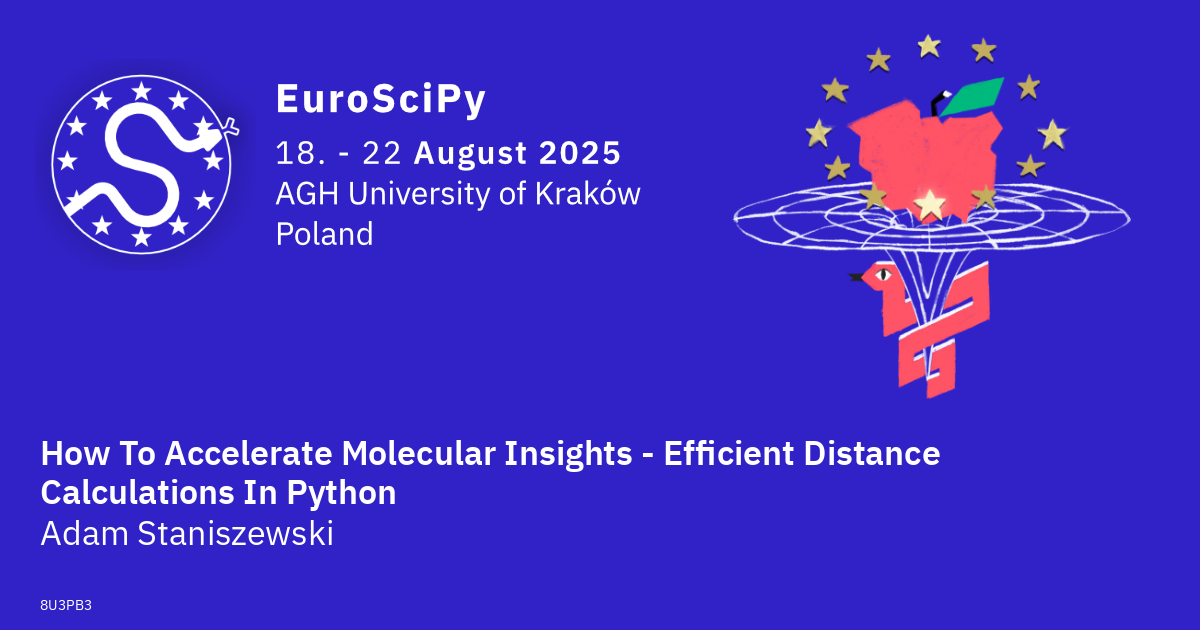How To Accelerate Molecular Insights - Efficient Distance Calculations In Python
Adam Staniszewski
The ability to efficiently compute distances between vectorized molecular representations is a backbone of both cheminformatics and bioinformatics. Molecular distance metrics serve as the foundation for a wide range of applications across these fields, with one of their most critical roles being in clustering tasks. Clustering is an essential method in molecular analysis, enabling researchers to identify structural similarities, predict biological activity, and facilitate virtual screening in drug discovery. As the volume of available molecular data continues to grow exponentially, the demand for scalable and computationally efficient methods to process and analyze these vast datasets has never been greater.
Traditional approaches to molecular similarity computations often rely on highly optimized, low-level implementations written in languages such as C++ to achieve maximum performance. These solutions leverage hardware-efficient operations and fine-tuned memory management to deliver exceptional computational speeds. However, despite their efficiency, such implementations can pose significant challenges for researchers who lack a strong background in computer science or software development. The complexity of writing and maintaining low-level code can create barriers to entry, making it difficult for scientists to experiment with or customize molecular analysis workflows.
In contrast, Python has emerged as a dominant force in the landscape of scientific computing, offering an extensive ecosystem of numerical and data-processing libraries, such as NumPy, SciPy, and scikit-learn. The language’s simplicity, readability, and rich functionality make it an attractive alternative for researchers seeking to implement computational methods without delving into the intricacies of low-level programming. Despite historical concerns about Python’s execution speed compared to compiled languages, recent advancements in just-in-time (JIT) compilation, vectorized operations, and parallel computing have significantly narrowed the performance gap.
In this work, we explore how Python’s modern computational capabilities can be harnessed to efficiently compute molecular distances while maintaining accessibility and usability. We focus on vectorized molecular representations, such as binary and count fingerprints, and incorporate sparse matrix representations to handle large molecular datasets efficiently. Sparse matrices enable us to store and process only the non-zero elements in molecular representations, dramatically reducing memory consumption and improving computation times for large-scale analyses. By leveraging bulk calculations and optimized numerical routines, we demonstrate that Python-based implementations can achieve near-C++ performance. Through careful optimization strategies, including the use of NumPy’s broadcasting, we show that Python can handle the challenges of large molecular datasets effectively, maintaining a balance between performance and accessibility.
Beyond implementation, we conduct a benchmarking study to evaluate the performance of our optimized Python-based methods. We compare them against state-of-the-art C++ libraries specifically designed for molecular similarity computations, assessing key factors such as computational efficiency, memory consumption, and scalability when applied to large molecular datasets. Our results indicate that, with appropriate optimizations, Python-based approaches can serve as practical alternatives, achieving a balance between performance, usability, and accessibility. We highlight the trade-offs involved, demonstrating how Python’s versatility enables efficient molecular distance computations without sacrificing interpretability or ease of integration within broader data analysis pipelines.
By showcasing the feasibility of high-performance molecular similarity computations in Python, our work lowers the barrier to entry for researchers and practitioners who may not have extensive experience with lower-level programming languages. This contribution enhances the accessibility of advanced molecular informatics tools, fostering broader adoption and enabling a wider range of scientists to leverage these computational techniques in their research. Ultimately, this work paves the way for more inclusive and reproducible computational chemistry and bioinformatics, empowering researchers across disciplines to engage with large-scale molecular data analysis using modern, user-friendly methodologies.
